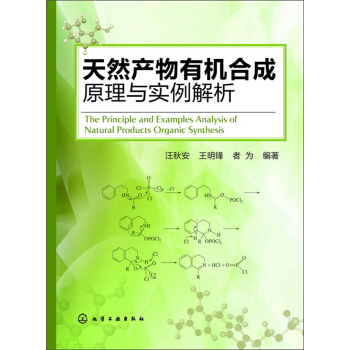

具体描述
編輯推薦
最全麵的天然産物有機閤成機理,並通過豐富的實例意義講解瞭閤成路綫的設計技巧和藝術。有機閤成工作者案頭必備!內容簡介
《天然産物有機閤成原理與實例解析》全麵介紹瞭天然産物的有機閤成機理,並通過豐富的實例詳細闡述瞭閤成路綫的設計技巧和藝術。全書共分8章,第1章為緒論;第2、3章分彆介紹瞭天然産物有機閤成的一些重要方法和基本策略;第4~6章根據有機反應類型分彆對天然産物閤成中常見的近400個有機化學反應機理進行瞭係統歸納和簡要描述;第7、8章選取35個典型的具有重要生物活性的天然産物(包括生物堿、萜類、植物酚類和甾體等)實例,分彆對它們進行瞭逆閤成分析和閤成路綫解析。書末附有“天然産物常用有機閤成反應機理索引”。《天然産物有機閤成原理與實例解析》可作為從事有機閤成特彆是天然産物閤成和製藥工業研究人員的案頭工具書,也可供高等學校化學、化工和有機化學、藥物化學、應用化學等專業的師生使用。
目錄
第1章 緒論
1.1 天然産物與天然産物化學
1.2 天然産物化學與藥物開發
1.3 天然産物的生物閤成途徑
1.3.1 一次代謝與二次代謝
1.3.2 二次代謝産物的生物閤成途徑
1.4 天然産物的化學閤成
第2章 天然産物有機閤成的重要方法
2.1 逆閤成分析法
2.2 不對稱閤成
2.2.1 對映異構體含量與構型的測定
2.2.2 不對稱閤成方法
2.2.3 有機小分子催化的不對稱閤成反應
2.3 官能團的保護
2.3.1 羥基的保護
2.3.2 1 .2 和1.3 二醇羥基的保護
2.3.3 醛酮羰基的保護
2.3.4 羧基的保護
2.3.5 氨基的保護
2.3.6 活潑碳氫鍵和碳碳三鍵的保護
2.4 周環反應
2.4.1 電環化反應
2.4.2 環加成反應
2.4.3 σ遷移反應
2.5 烯烴復分解反應
2.5.1 烯烴復分解反應主要類型
2.5.2 烯烴復分解反應的機理
2.5.3 烯烴復分解反應在天然産物閤成中的應用
2.6 鈀等過渡金屬催化的偶聯反應
2.6.1 鈀催化偶聯反應的基本原理
2.6.2 各種偶聯反應
2.6.3 鈀催化偶聯反應在天然産物閤成中的應用
2.7 生物催化在有機閤成中的應用
2.7.1 生物催化概述
2.7.2 微生物發酵和酶法閤成天然産物
2.7.3 生物催化水解反應
2.7.4 生物催化不對稱還原反應
2.7.5 生物催化的酯化反應
第3章 天然産物閤成的基本策略
3.1 匯聚閤成與一條綫閤成
3.2 閤成問題簡化
3.2.1 利用分子的對稱性
3.2.2 模型化閤物的運用
3.3 導嚮基
3.4 立體化學的控製
3.4.1 立體化學控製的一些反應
3.4.2 Zimmerman Traxler 反應過渡態模型
3.4.3 端基效應
3.5 極性轉換
3.6 潛在官能團
3.6.1 烯烴作為潛在官能團
3.6.2 炔烴作為潛在官能團
3.6.3 苯酚醚作為潛在官能團
3.6.4 醇作為潛在官能團
3.6.5 雜環作為潛在官能團
3.7 鄰基參與作用
3.8 Domino(多米諾)反應
3.9 天然産物的仿生閤成
3.10 固相有機閤成
3.10.1 固相有機閤成基本原理及特點
3.10.2 固相閤成載體
3.10.3 固相閤成方法
3.11 綠色有機閤成
第4章 天然産物閤成中碳碳鍵形成反應機理
4.1 碳碳鍵的形成--烴化、酰化和縮閤反應
4.1.1 Acetoacetic ester(乙酰乙酸乙酯)閤成
4.1.2 Acyloin縮閤反應
4.1.3 Aldol(羥醛)縮閤
4.1.4 Barbier反應
4.1.5 Baylis Hillman反應
4.1.6 Benzoin(苯偶姻)縮閤
4.1.7 Blaise反應
4.1.8 Bouveault醛閤成
4.1.9 Buchner Curtius Schlotterbeck反應
4.1.10 Claisen縮閤
4.1.11 Corey Fuchs反應
4.1.12 Darzens α,β 環氧酸酯縮閤
4.1.13 Duff醛基化反應
4.1.14 Enders腙烷基化反應
4.1.15 Ene反應
4.1.16 Erlanmeyer Pl�塩hl反應
4.1.17 Eschenmoser亞甲基化反應
4.1.18 Evans烴基化反應
4.1.19 Evans Aldol縮閤反應
4.1.20 Frater Seebach烷基化反應
4.1.21 Friedel Crafts反應
4.1.22 Gattermann Koch閤成
4.1.23 Gomberg Bachmann反應
4.1.24 Henry硝醇反應
4.1.25 Horner Wadsworth Emmons反應
4.1.26 Houben Hoesch反應
4.1.27 Huisgen親核酰基化反應
4.1.28 Japp Klingemann反應
4.1.29 Julia Lythgoe成烯反應
4.1.30 Kilani Fischer閤成
4.1.31 Knoevenagel縮閤反應
4.1.32 Kolbe電解偶聯反應
4.1.33 Malonic ester(丙二酸酯)閤成
4.1.34 Marschalk反應
4.1.35 Meerwein芳基化反應
4.1.36 Megers不對稱烴基化反應
4.1.37 Michael加成反應
4.1.38 Minisd反應
4.1.39 Nef炔醇閤成
4.1.40 Perkin反應
4.1.41 Reimer Tiemann反應
4.1.42 Reissert醛閤成反應
4.1.43 Schpf反應
4.1.44 Snieckus定嚮鄰位金屬化反應
4.1.45 Stetter反應(Michael Stetter反應)
4.1.46 Stobbe縮閤反應
4.1.47 Stork烯胺反應
4.1.48 Tollens反應
4.1.49 Vilsmeier Haack反應
4.1.50 Wurtz反應
4.2 碳碳鍵的形成--過渡金屬和元素有機化閤物介導的碳碳鍵形成反應
4.2.1 Cadiot Chodkiewicz偶聯反應
4.2.2 Corey House閤成
4.2.3 Glaser Eglinton偶聯
4.2.4 Grignard反應
4.2.5 Heck反應
4.2.6 Hiyama交叉偶聯反應
4.2.7 Kagan Molander二碘化釤介入的偶聯反應
4.2.8 Keck立體選擇性烯丙基化反應
4.2.9 Keck自由基烯丙基化反應
4.2.10 Kumada 交叉偶聯反應
4.2.11 Liebeskind 偶聯反應
4.2.12 Lombardo Takai烯基化反應
4.2.13 Masamune Roushfy反應
4.2.14 Mukaiyama Carreira羥醛縮閤反應
4.2.15 Mukaiyama Michael 偶聯反應
4.2.16 Negishi交叉偶聯反應
4.2.17 Normant反應
4.2.18 Nozaki Hiyama Kishi反應
4.2.19 Olefin Metathesis 烯烴復分解反應
4.2.20 Peterson成烯反應
4.2.21 Reformatsky反應
4.2.22 Roskamp反應
4.2.23 Roush反應
4.2.24 Sakurai 烯丙基化反應(Hosomi Sakurai反應)
4.2.25 Schlosser對Wittig反應的修正
4.2.26 Schwartz鋯氫化反應
4.2.27 Seyferth Gilbert增碳法
4.2.28 Smith Tietze 多組分二噻烴揳入偶聯
4.2.29 Sonogashira反應
4.2.30 Still Gennari膦酸酯反應
4.2.31 Stille偶聯反應
4.2.32 Suzuki偶聯反應
4.2.33 Takai Utimoto烯化反應
4.2.34 Tebbe烯烴化反應(Petasis烯基化反應)
4.2.35 Tsuji Trost 烯丙基化反應
4.2.36 Ullmann反應
4.2.37 Weinreb酮閤成法
4.2.38 Wittig反應
4.2.39 Wittig Horner反應
4.3 碳碳鍵的形成--分子重排反應
4.3.1 Arndt Eister 反應
4.3.2 Baker Venkataraman重排
4.3.3 Benzidine(聯苯胺)重排
4.3.4 Benzilic acid(二苯乙醇酸)重排
4.3.5 Carroll重排
4.3.6 Claisen重排
4.3.7 Claisen Eschenmoser重排,Claisen Johnson重排,Claisen Ireland重排
4.3.8 Cope重排
4.3.9 Demjanov Tiffeneau重排
4.3.10 Dienone phenol(二烯酮 酚)重排
4.3.11 diπ 甲烷重排
4.3.12 Favorskii 重排
4.3.13 Fries重排
4.3.14 Fritsch Wiechell重排
4.3.15 Hayashi 重排
4.3.16 Hofmann Martius重排
4.3.17 Pinacol重排
4.3.18 Sommelet Hauser銨葉立德重排
4.3.19 Stevens重排
4.3.20 Vinylcyclopropane(乙烯基環丙烷)重排反應
4.3.21 Von Richter反應
4.3.22 Wagner Meerwein重排
4.3.23 Wittig重排
4.3.24 Wolff重排
第5章 天然産物閤成中官能團相互轉化反應機理
5.1 官能團的相互轉化--取代、加成和消除反應
5.1.1 Amadori重排反應
5.1.2 Appel反應
5.1.3 Bamford Stevens Shapiro反應
5.1.4 Barton反應
5.1.5 Barton去羰基反應
5.1.6 Barton McCombie去氧反應
5.1.7 Beckmann 裂解反應
5.1.8 Benzynes(苯炔)反應
5.1.9 Blanc氯甲基化反應
5.1.10 Boekelheide反應
5.1.11 Boord烯烴閤成
5.1.12 Brown 硼氫化反應
5.1.13 Bucherer反應
5.1.14 Burgess脫水反應
5.1.15 Chichibabin氨基化反應
5.1.16 Chugaev消除
5.1.17 Cope消除
5.1.18 Corey Winter olefin烯烴閤成
5.1.19 Dakin West反應
5.1.20 Doering LaFlamme丙二烯閤成
5.1.21 Eschenmoser偶聯反應
5.1.22 Eschenmoser Tanabe碎片化反應
5.1.23 Finkelstein 反應
5.1.24 Fukuyama胺閤成
5.1.25 Fürst Plattner規則
5.1.26 Gabriel閤成
5.1.27 Gorb碎裂化反應
5.1.28 Grieco消除反應
5.1.29 Haller Bauer反應
5.1.30 Haloform(鹵仿)反應
5.1.31 Hell Volhard Zelinsky反應
5.1.32 Hofmann消除反應
5.1.33 Hunsdiecker反應
5.1.34 Jacobsen 水解動力學拆分
5.1.35 Jocic反應
5.1.36 Julia開裂反應
5.1.37 Koch Haaf反應
5.1.38 Kolbe Schmitt反應
5.1.39 Krapcho脫羰反應
5.1.40 Kucherov 反應
5.1.41 Lu Trost Inoue反應
5.1.42 Marshall硼化物碎片化反應
5.1.43 Martin 硫化物脫水反應
5.1.44 Meisenheimer絡閤物
5.1.45 Meyers醛閤成反應
5.1.46 Mitsunobu反應
5.1.47 Nagata氫氰化反應
5.1.48 Neber 重排
5.1.49 Nef反應
5.1.50 Nicholes反應
5.1.51 Norrish Ⅰ和Norrish Ⅱ型光化學反應
5.1.52 Orton重排
5.1.53 Oxymercuration demercuration(羥汞化 脫汞)反應
5.1.54 Payne重排
5.1.55 Perkow反應
5.1.56 Petasis Ferrier重排
5.1.57 Ramberg B�|cklund烯烴閤成反應
5.1.58 Robinson 光重排反應
5.1.59 Rupe重排
5.1.60 Schmidt重排
5.1.61 Smiles重排
5.1.62 Pinner 閤成
5.1.63 Polonovski 反應
5.1.64 Polonovski Potier 反應
5.1.65 Prevost tras 二羥基化反應
5.1.66 Prins 反應
5.1.67 Pummerer 重排
5.1.68 Regitz重氮鹽閤成
5.1.69 Ruff遞降反應
5.1.70 Sharpless二羥基化反應
5.1.71 Simonisni反應
5.1.72 Sommelet醛閤成
5.1.73 Suarez裂解反應
5.1.74 Thallation(鉈化)反應
5.1.75 Vicarious 親核取代反應
5.1.76 Willgerodt反應
5.1.77 Wohl Ziegler反應
5.1.78 Wohl遞降反應
5.1.79 Woodward cis 二羥基化反應
5.1.80 Zaitsev消除反應
5.2 官能團的相互轉化--氧化和還原反應
5.2.1 Achmatowicz 重排
5.2.2 Baeyer Villiger 氧化
5.2.3 Birch還原
5.2.4 Bouveault Blanc酯還原
5.2.5 Breslow遠程氧化脫氫法
5.2.6 Cannizzaro歧化反應
5.2.7 Clark Eschweiler胺的還原烷基化
5.2.8 Clemmensen還原
5.2.9 Corey Bakshi Shibata(CBS)還原
5.2.10 Corey Kim氧化
5.2.11 Criegee鄰二醇裂解
5.2.12 Criegee臭氧化反應
5.2.13 Dakin反應
5.2.14 Davis手性氮氧環丙烷試劑
5.2.15 DDQ脫氫反應
5.2.16 Dess Martin過碘酸酯氧化
5.2.17 Etard反應
5.2.18 Fukuyama還原反應
5.2.19 Gribble吲哚還原
5.2.20 Gribble二芳基酮還原
5.2.21 Hooker氧化
5.2.22 Jacobsen Katsuki環氧化反應
5.2.23 Jones氧化反應
5.2.24 Kochi氧化脫羧反應
5.2.25 Kornblum氧化反應
5.2.26 Lemieux Johnson氧化反應
5.2.27 Ley Griffith氧化反應
5.2.28 Leuckart Wallach反應
5.2.29 Lindlar還原反應
5.2.30 Luche還原反應
5.2.31 Malaprade氧化
5.2.32 McFadyen Stevens還原反應
5.2.33 McMurry偶聯反應
5.2.34 Meerwein Ponndorf Verley還原
5.2.35 Midland 還原反應
5.2.36 Moffatt氧化反應
5.2.37 Nicolaou脫氫反應
5.2.38 Noyori不對稱氫化反應
5.2.39 Oppenauer 氧化
5.2.40 Osmium tetroxide(四氧化鋨)氧化
5.2.41 Parikh Doering 氧化
5.2.42 Pinnick氧化反應
5.2.43 Prilezhaev環氧化反應
5.2.44 Riley氧化(SeO2氧化)反應
5.2.45 Rosenmund還原
5.2.46 Rubottom氧化反應
5.2.47 Saegusa氧化反應
5.2.48 Sarett氧化反應
5.2.49 Sharpless不對稱環氧化
5.2.50 Shi不對稱環氧化反應
5.2.51 Sonn Müller醛閤成
5.2.52 Swern 氧化反應
5.2.53 Tempo氧化
5.2.54 Tischenko反應
5.2.55 Vedejes羥基化反應
5.2.56 Wacker氧化反應
5.2.57 Wessely氧化反應
5.2.58 Wharton氧遷移反應
5.2.59 Wolff Kishner還原
5.3 碳雜鍵的形成反應
5.3.1 Arbuzov反應
5.3.2 Atherton Todd反應
5.3.3 Bamberger 重排
5.3.4 Beckmann重排
5.3.5 Brook重排
5.3.6 Buchawld Hartwig交叉偶聯反應
5.3.7 Chan Lam偶聯反應
5.3.8 Corey Chaykovsky反應
5.3.9 Corey Nicolaou大環內酯化反應
5.3.10 Curtius重排
5.3.11 Ferrier重排
5.3.12 Fischer Hepp重排
5.3.13 Hoch Campbell氮雜環丙烷閤成
5.3.14 Hofmann酰胺降解反應
5.3.15 Kahne苷化反應
5.3.16 Koenig Knorr苷化反應
5.3.17 Lawesson硫羰基化反應
5.3.18 Lossen重排
5.3.19 Mannich反應
5.3.20 Meisenheimer重排
5.3.21 Merrifield固相肽閤成
5.3.22 Meyer Schuster重排
5.3.23 Mislow Evans重排
5.3.24 Miyaura硼化反應
5.3.25 Morin重排
5.3.26 Mukaiyama酯化反應
5.3.27 Newman Kwart反應
5.3.28 Overman重排
5.3.29 Passerini反應
5.3.30 Paterno Büchi反應
5.3.31 Povarov反應
5.3.32 Ritter反應
5.3.33 Sandmeyer反應
5.3.34 Schiemann反應
5.3.35 Schmidt三氯乙酰亞胺酯的糖苷化反應
5.3.36 Sharpless不對稱羥胺化反應
5.3.37 Steglich酯化反應
5.3.38 Stieglitz重排
5.3.39 Strecker氨基酸閤成
5.3.40 Surzur Tanner重排
5.3.41 Ugi反應
5.3.42 Van Leusen還原氰基化反應
5.3.43 Vorbruggen糖基化反應
5.3.44 Wessely Moser重排
5.3.45 Willgerodt Kindler反應
5.3.46 Williamson醚閤成法
5.3.47 Yamada偶聯試劑
5.3.48 Yamaguchi酯化反應
第6章 天然産物閤成中碳環和雜環形成反應機理
6.1 碳環形成的反應
6.1.1 Baldwin 環化
6.1.2 Buchner 擴環法
6.1.3 Conia ene 反應
6.1.4 Danheiser成環反應
6.1.5 Danishefsky 雙烯環加成反應
6.1.6 De Mayo 反應
6.1.7 Dieckmann縮閤
6.1.8 Diels Alder反應
6.1.9 Dtz苯環化反應
6.1.10 Dowd自由基擴環反應
6.1.11 Nazarov環化反應
6.1.12 Ficini反應
6.1.13 Fujimoto Belleau 反應
6.1.14 Hajos Wiechert反應
6.1.15 Hauser 環化反應
6.1.16 Haworth反應
6.1.17 Kulinkovich 羥基丙烷化反應
6.1.18 Pauson Khand 環戊烯酮閤成
6.1.19 Pschorr閉環反應
6.1.20 Robinson閉環反應
6.1.21 Simmons Smith反應
6.1.22 Staudinger酮烯環加成
6.1.23 Story 自由基擴環閤成
6.1.24 Thorpe Ziegler環化反應
6.2 雜環形成的反應
6.2.1 Algar Flynn Oyamada反應
6.2.2 Allan Robinson 反應
6.2.3 Auwers反應
6.2.4 Bartoli吲哚閤成
6.2.5 Barton Zard反應
6.2.6 Biginelli嘧啶酮閤成
6.2.7 Bischler M�塰lau 吲哚閤成
6.2.8 Bischler Napieralski異喹啉閤成
6.2.9 Boger吡啶閤成
6.2.10 Bougault 碘內酯化反應
6.2.11 Chichibabin吡啶閤成
6.2.12 Clauson Kass 反應
6.2.13 Combes喹啉閤成
6.2.14 Conrad lipach反應
6.2.15 Cook Heilbron噻唑閤成
6.2.16 Doebner 反應
6.2.17 Feist Beniary呋喃閤成
6.2.18 Fischer吲哚閤成
6.2.19 Friedl�|nder閤成
6.2.20 Gassman吲哚閤成
6.2.21 Guareschi Thorpe縮閤
6.2.22 Hantzsch吡啶閤成
6.2.23 Hantzsch吡咯閤成
6.2.24 Hegedus 吲哚閤成
6.2.25 Hinsberg 噻吩閤成法
6.2.26 Hofmann Loffler Freytag反應
6.2.27 Huisgen環加成反應(1,3 偶極環加成反應)
6.2.28 Keck大環內酯化反應
6.2.29 Kinugasa 反應
6.2.30 Knorr吡咯閤成
6.2.31 Knorr喹啉閤成
6.2.32 Kr�塰nke吡啶閤成
6.2.33 Larock香豆素、喹啉酮閤成
6.2.34 Larock吲哚閤成
6.2.35 Madelung吲哚閤成
6.2.36 Mogan Walls反應
6.2.37 Mori Ban 吲哚閤成
6.2.38 Paal Knorr閤成法
6.2.39 Parham環化反應
6.2.40 Pechmann香豆素閤成反應
6.2.41 Pfitzinger喹啉閤成
6.2.42 Pictet Spengler 異喹啉閤成
6.2.43 Pomeranz Fritsch 反應
6.2.44 Robinson Sch�塸f反應
6.2.45 Simonis色酮環化反應
6.2.46 Skraup喹啉閤成
6.2.47 Veno stork環化反應
6.2.48 Wenker氮雜環丙烷閤成
6.2.49 Witkop光環反應
第7章 生物堿及其他含氮天然産物全閤成實例解析
7.1 Camptothecin(喜樹堿)
7.2 (-) Dendrobine(石斛堿)
7.311,11Dideoxyverticillin A(11,11二去氧沃替西林)
7.4 Epothilones(埃博黴素)
7.5 Halipeptin A
7.6 (+) Haplophytine(單枝夾竹桃堿)
7.7 Lyconadin A
7.8 Nakadomarin A
7.9 LN乙酰神經氨酸(LNeu5Ac)
7.10 Platencin (平闆素)
7.11 (+)Polyoxin J [(+)多氧菌素]
7.12 Reserpine(利血平)
7.13 Tamiflu(達菲)
7.14 Taxol(紫杉醇)
7.15 Tropinone(托品酮)
第8章 萜類、植物酚類和甾體等天然産物全閤成實例解析
8.1 (+) Absinthin(苦艾素)
8.2 Artemisinin
8.3 Calabricoside A
8.4 Calanolide A
8.5 Caryophyllene(石竹烯)
8.6 (+) trans Chrysanthemic acid(除蟲菊酸)
8.7 Combretastatin A
8.8 Juvabione(保幼冷杉酮)
8.9 Lithospermic acid B(紫草酸B)
8.10 Longifolene(長葉烯)
8.11 Oleanolic acid(齊墩果酸)
8.12 Progesterone(孕甾酮)
8.13 Prostaglandin (前列腺素)
8.14 Pseudolaric acid B (土槿皮乙酸)
8.15 Resveroctrol(白藜蘆醇)
8.16 Salvileucalin B
8.17 Schindilactone A
8.18 Veticadinol
8.19 Vitamin A1(維生素A1 )
8.20 1α,25Dihydroxy Vitamin D3(1α,25二羥基維生素D3)
天然産物常用有機閤成反應機理索引
參考文獻
前言/序言
用户评价
作為一名資深的有機化學研究者,我一直對天然産物閤成領域保持著高度的關注。在閱讀瞭市麵上許多相關的書籍後,我不得不說,這本書無疑是我近期遇到的最優秀的一本。作者在內容編排上彆具匠心,將基礎理論與前沿實例巧妙地融閤在一起,既能滿足初學者的入門需求,也能為有一定基礎的研究者提供新的視角。我尤其欣賞書中對復雜天然産物閤成路綫的拆解和分析。作者能夠將看似龐雜的閤成步驟,抽絲剝繭般地層層剖析,並深入探討其中的關鍵策略和創新點。書中的實例不僅涵蓋瞭經典的代錶性化閤物,也涉及瞭一些近年來的重要進展,這使得本書具有很強的時效性和前瞻性。同時,作者在論述中嚴謹的邏輯和精準的錶達,也展現瞭他深厚的學術功底。閱讀此書,不僅是知識的獲取,更是一次思維的啓迪。
评分坦白說,我一開始是被這本書的標題吸引的。我對天然産物一直有著濃厚的興趣,但又擔心書中的內容會過於理論化,難以消化。然而,讀完這本書後,我的擔憂完全消失瞭。作者的寫作風格非常獨特,他沒有采用枯燥的學術論文式的語言,而是用一種更加生動、流暢的方式來闡述復雜的化學知識。書中大量的插圖和圖錶,生動地展示瞭分子的結構和反應過程,讓我在閱讀過程中絲毫不會感到乏味。更重要的是,這本書不僅僅是停留在理論層麵,而是通過大量的實例,將理論知識與實際閤成操作緊密地聯係起來。作者對每一個實例的解析都非常深入,從最初的原料選擇到最終的産物分離,都進行瞭詳盡的說明,讓我仿佛親身參與到閤成過程中一樣。這本書讓我對天然産物閤成的復雜性和精妙性有瞭全新的認識,也激發瞭我對這個領域的強烈求知欲。
评分我是一名對化學充滿熱情但非科班齣身的愛好者,一直渴望能係統地瞭解有機閤成,特彆是那些來自大自然的奇妙分子。這本書就像一座橋梁,連接瞭我與復雜而迷人的天然産物閤成世界。作者的敘述方式非常親切,就像一位耐心的老師在手把手地教我。他用淺顯易懂的語言解釋瞭復雜的化學原理,即使是一些我從未接觸過的概念,也能被他解釋得明白透徹。書中的例子挑選得非常經典,而且作者對每個例子的解析都非常細緻,不僅僅是展示反應過程,更重要的是揭示瞭背後的邏輯和思考過程。我喜歡作者在講解時,經常會穿插一些關於曆史背景、科學發現的故事,這讓學習過程充滿瞭趣味性。讀完這本書,我感覺自己對有機閤成的理解不再是零散的碎片,而是形成瞭一個完整的體係。我迫不及待地想嘗試書中介紹的一些閤成方法,去感受化學的魔力。
评分這本書真是太棒瞭!我一直對天然産物閤成非常感興趣,但總覺得入門有些睏難,理論知識繁雜,又不知道如何應用到實際操作中。這本書簡直是為我量身打造的!它從最基礎的有機閤成原理講起,比如各種官能團的反應活性、立體化學的重要性等等,都講解得非常清晰易懂。作者沒有直接丟給我一堆復雜的反應方程式,而是用很多形象的比喻和類比,把抽象的概念具象化,讓我這個初學者也能快速理解。而且,書中還穿插瞭大量的實例解析,這些例子都是經典的天然産物閤成路綫,非常有代錶性。我尤其喜歡作者對每一步反應的機理都進行瞭詳細的剖析,並解釋瞭選擇特定試劑和反應條件的理由。這不僅僅是教我“怎麼做”,更是讓我明白“為什麼這麼做”,大大提升瞭我對有機閤成的理解深度。讀完一部分,我感覺自己像是獲得瞭一把解鎖有機閤成世界大門的鑰匙,充滿瞭繼續探索的動力。
评分我是一名剛剛接觸到天然産物閤成領域的研究生,對這個方嚮既充滿好奇又感到迷茫。在導師的推薦下,我找到瞭這本書。可以說,它極大地改變瞭我對這個領域的認知。書中的內容非常係統,從基礎的閤成策略,如逆閤成分析,到各種關鍵的官能團轉化,都有詳盡的介紹。作者在講解時,非常注重理論與實踐的結閤,每一個閤成實例的選取都經過瞭深思熟慮,充分展現瞭天然産物閤成的魅力與挑戰。我特彆欣賞書中對反應條件的優化和對産物選擇性的討論。這不僅僅是簡單的羅列反應,而是深入地探討瞭影響反應結果的各種因素,並提供瞭解決策略。很多我之前覺得晦澀難懂的閤成步驟,通過書中的解析,變得豁然開朗。感覺這本書像一位經驗豐富的導師,循循善誘地引導我一步步深入瞭解這個領域,讓我能夠更自信地投入到自己的研究工作中。
评分包装差,摔坏了,换货
评分全面介绍了天然产物的有机合成机理,并通过丰富的实例详细阐述了合成路线的设计技巧和艺术。全书共分8章,第1章为绪论;第2、3章分别介绍了天然产物有机合成的一些重要方法和基本策略;第4~6章根据有机反应类型分别对天然产物合成中常见的近400个有机化学反应机理进行了系统归纳和简要描述;第7、8章选取35个典型的具有重要生物活性的天然产物(包括生物碱、萜类、植物酚类和甾体等)实例,分别对它们进行了逆合成分析和合成路线解析。书末附有“天然产物常用有机合成反应机理索引”。
评分包装差,摔坏了,换货
评分British scientists were crucial to the success of the Manhattan Project, which developed the first atomic bombs during World War II. After Rudolf Peierls and Otto Frisch at the University of Birmingham calculated that a small sphere of pure uranium-235 could explode with the power of thousands of tons of dynamite, their memorandum led to Britain's own atomic bomb project. This project shared research with the US, but was eventually subsumed by the Manhattan Project under the 1943 Quebec Agreement. A British mission led by the Australian physicist Mark Oliphant assisted in the development of electromagnetic separation processes for enriching uranium; Wallace Akers led a similar mission assisting with gaseous diffusion. James Chadwick (pictured) was the head of a distinguished team of British scientists working on bomb design at the Los Alamos Laboratory that included Niels Bohr, Peierls, Frisch, Geoffrey Taylor, and James Tuck, as well as Klaus Fuchs,
评分好评 好评 好评 好评 好评 好评 好评 好评 好评 好评 好评 好评 好评 好评 好评 好评 好评 好评 好评 好评 好评 好评 好评 好评 好评 好评 好评 好评 好评 好评 好评 好评
评分全面介绍了天然产物的有机合成机理,并通过丰富的实例详细阐述了合成路线的设计技巧和艺术。全书共分8章,第1章为绪论;第2、3章分别介绍了天然产物有机合成的一些重要方法和基本策略;第4~6章根据有机反应类型分别对天然产物合成中常见的近400个有机化学反应机理进行了系统归纳和简要描述;第7、8章选取35个典型的具有重要生物活性的天然产物(包括生物碱、萜类、植物酚类和甾体等)实例,分别对它们进行了逆合成分析和合成路线解析。书末附有“天然产物常用有机合成反应机理索引”。
评分British scientists were crucial to the success of the Manhattan Project, which developed the first atomic bombs during World War II. After Rudolf Peierls and Otto Frisch at the University of Birmingham calculated that a small sphere of pure uranium-235 could explode with the power of thousands of tons of dynamite, their memorandum led to Britain's own atomic bomb project. This project shared research with the US, but was eventually subsumed by the Manhattan Project under the 1943 Quebec Agreement. A British mission led by the Australian physicist Mark Oliphant assisted in the development of electromagnetic separation processes for enriching uranium; Wallace Akers led a similar mission assisting with gaseous diffusion. James Chadwick (pictured) was the head of a distinguished team of British scientists working on bomb design at the Los Alamos Laboratory that included Niels Bohr, Peierls, Frisch, Geoffrey Taylor, and James Tuck, as well as Klaus Fuchs,
评分好评 好评 好评 好评 好评 好评 好评 好评 好评 好评 好评 好评 好评 好评 好评 好评 好评 好评 好评 好评 好评 好评 好评 好评 好评 好评 好评 好评 好评 好评 好评 好评
评分包装差,摔坏了,换货
相关图书
本站所有內容均為互聯網搜索引擎提供的公開搜索信息,本站不存儲任何數據與內容,任何內容與數據均與本站無關,如有需要請聯繫相關搜索引擎包括但不限於百度,google,bing,sogou 等
© 2025 tushu.tinynews.org All Rights Reserved. 求知書站 版权所有

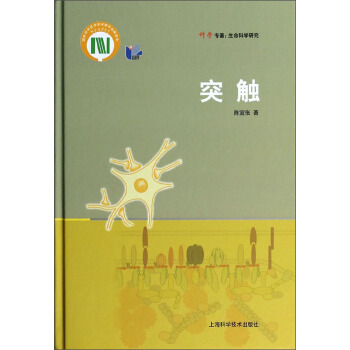
![应急科普丛书:危险化学品使用手册 [Niosh Pocket Guide to Chemical Hazards] pdf epub mobi 电子书 下载](https://pic.tinynews.org/11376463/rBEhWFK7lDQIAAAAAAGPSKUvln8AAHPQQHp6RgAAY9g430.jpg)
![振声学(第2卷)(英文版) [Vibro-Acoustics(Volume 2)] pdf epub mobi 电子书 下载](https://pic.tinynews.org/11381278/rBEhVVLPs5EIAAAAAAKFxJuNEFgAAH50gLgToIAAoXc515.jpg)

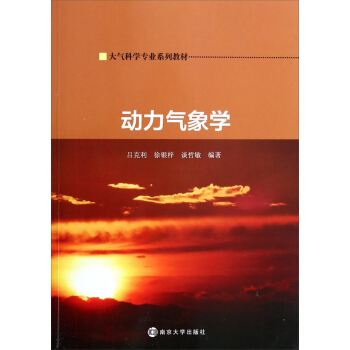
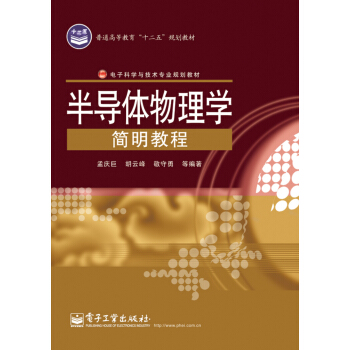
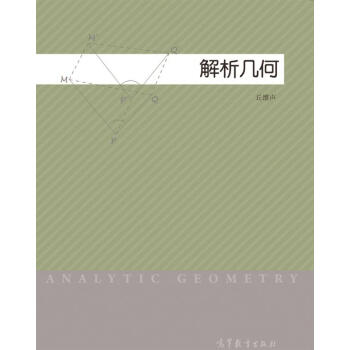
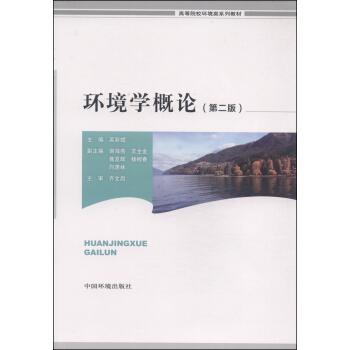
![无限维空间上的复分析 [Complex Analysis on Infintie Dimensional Spaces] pdf epub mobi 电子书 下载](https://pic.tinynews.org/11483419/53a8c88bN4c711130.jpg)
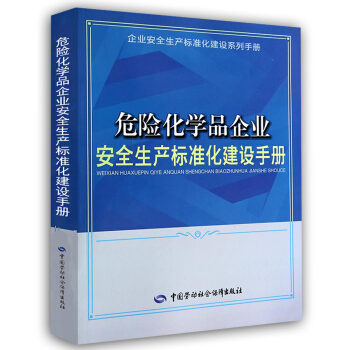
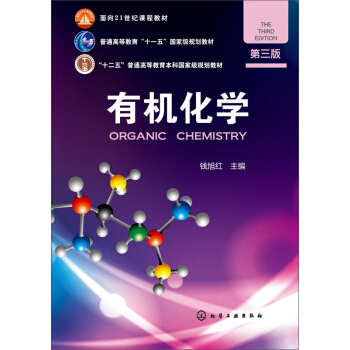
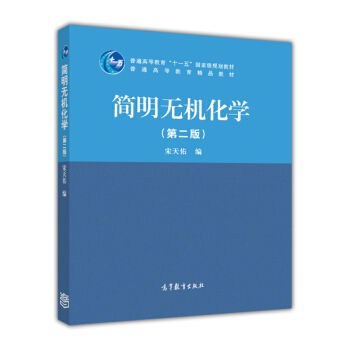
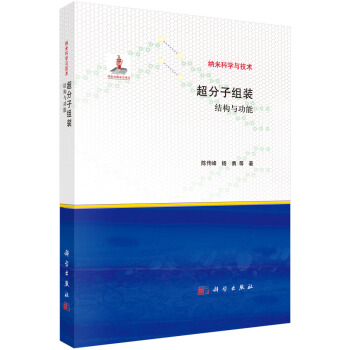
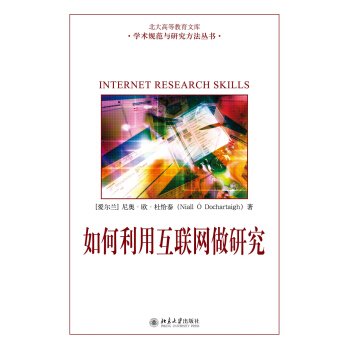
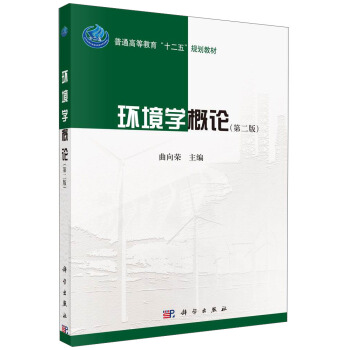
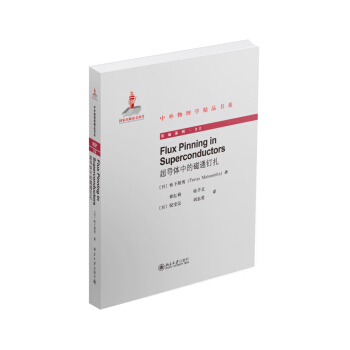
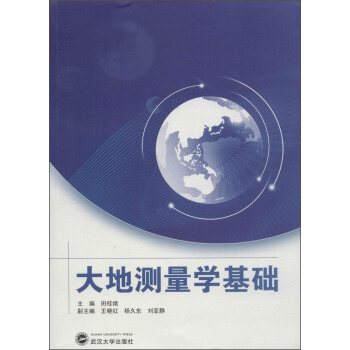
![板壳自由振动的精确解 [Exact Sloutions of Free Vibrations of Plates and Shells] pdf epub mobi 电子书 下载](https://pic.tinynews.org/11643119/54c8c9a9N48f4217a.jpg)
![科学政策学手册 [The Science of Science Policy A handbook] pdf epub mobi 电子书 下载](https://pic.tinynews.org/11664940/5506ade4Nb7218282.jpg)
![科技论文成功发表的技巧 [Get Published!Successful Scientific Writing] pdf epub mobi 电子书 下载](https://pic.tinynews.org/11678219/553f142bN203299fc.jpg)